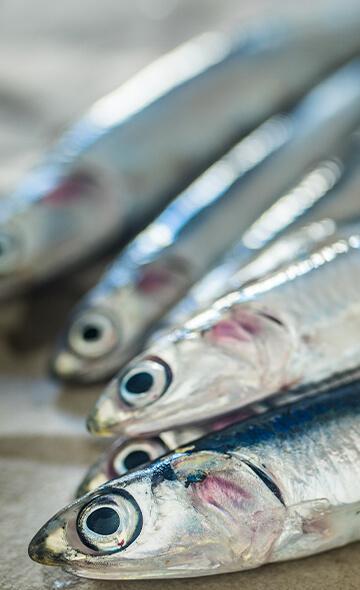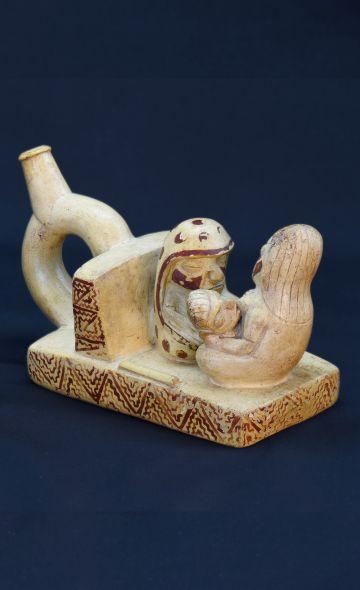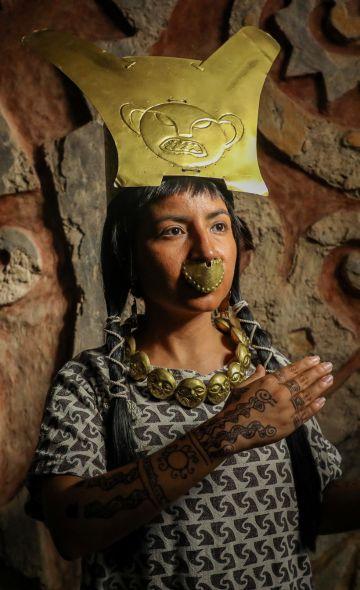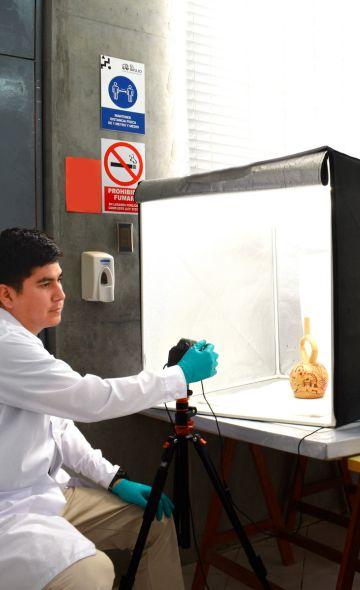- Visitors
- Researchers
- Students
- Community
- Information for the tourist
- Hours and fees
- How to get?
- Visitor Regulations
- Virtual tours
- Classic route
- Mystical route
- Specialized route
- Site museum
- Know the town
- Cultural Spaces
- Cao Museum
- Huaca Cao Viejo
- Huaca Prieta
- Huaca Cortada
- Ceremonial Well
- Walls
- Play at home
- Puzzle
- Trivia
- Memorize
- Crosswords
- Alphabet soup
- Crafts
- Pac-Man Moche
- Workshops and Inventory
- Micro-workshops
- Collections inventory
- News
- Researchers
- Series on Andean Food: Anchoveta
News
CategoriesSelect the category you want to see:

Magdalena de Cao to Once Again Host an International Mural Art Gathering ...
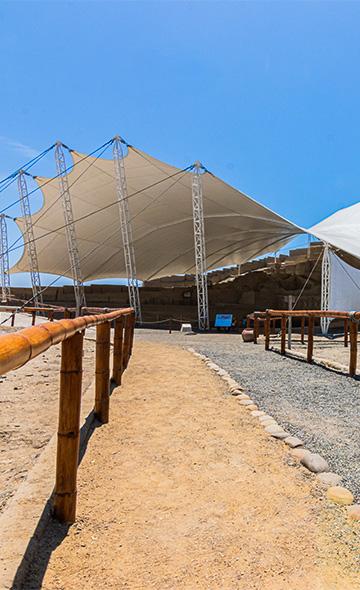
Explore El Brujo Through Virtual Tours: Culture and History at a Click ...
To receive new news.
By: José Ismael Alva Ch. y Leslie Zúñiga Becerra
By José Ismael Alva Ch. And Leslie Zúñiga Becerra
"In this city of Lima and in its region, a large quantity of fresh anchovies is spent all year round, and it is considered as gift fish* and with a very good flavor ..."
Bernabé Cobo, 1653
The anchoveta (Engraulis ringens) is one of the most abundant and consumed fish from our sea. Despite the crisis generated by the El Niño phenomenon and overfishing in 1972, the recovery of this small fish has been remarkable and we can enjoy it in today's gastronomy. Let's review together the history of anchoveta. Let’s learn about the dishes in which it is prepared and its nutritional properties.
Biological characteristics
Anchoveta is a fish that moves in shoals through the surface waters along our sea. The cold waters and the planktonic richness of the Humboldt Current benefit its reproduction, so the anchoveta manage to spawn in all latitudes of the Peruvian sea. Due to its adaptation to cold environments, the reproductive process of the anchoveta is altered by the strong influx of warm waters, generated by the El Niño Phenomenon in the region. The size of anchoveta averages 12 to 17 cm; however, older specimens can reach 20 cm. It lives for approximately three years and reaches a weight of 27.3 g [1, 2, 3].
The Anchoveta in history
The oldest evidence of anchovy consumption on the Peruvian coast is found in the upper part of the Zaña Valley (Lambayeque Region), with dates between 9 700 and 9 200 BC. [14]. On the other hand, in the Huaca Prieta, located at the southern end of the El Brujo Archaeological Complex (La Libertad Region), the remains anchoveta are dated 5 600 BC. , in times when fishing intensified thanks to the making of cotton nets [4, 5].
On the Central Coast of Peru, the sites of the Archaic period (7600 - 1700 BC) of Caral, El Paraíso and La Paloma have in anchoveta the fish with the greatest presence in archaeological contexts [1]. Since then, and depending on the natural cycles, anchoveta became one of the most consumed marine species in the diet of ancient Peru.
During the colony, the density of anchoveta in the Peruvian sea attracted the attention of the Spanish. Father Bernabé Cobo in his work History if the New World describes in detail for us the prolific presence of this fish:
“Such thick schools of anchoveta tend to come along this coast of Peru that, while I was sailing from Lima to Trujillo in 1627, the one that surrounded our ship was so large that it looked like a black stain in the water, and, as the water was then calm, the people from the ship caught them in baskets, with no more work than placing the edge of the baskets into the sea and take them out full of anchovetas”[6].
In times of the Viceroyalty, anchoveta was a very popular food resource in Lima, and probably in the other coastal cities, due to its good flavor and low sale price. It was consumed fresh in the nearby coastal areas, and dried in the sun for distribution to remote locations. Much anchoveta entered the city from the ports and coves annually, so apparently there was no shortage of it [6].
A world-class food today
This small fish plays a fundamental role in the food network of the Humboldt ecosystem, serving as food for hundreds of marine animals, birds, mammals and human beings [7]. Currently, anchoveta is the most captured species in the world and the main export product of Peru. The anchoveta industry allocates a large part of the catch to the elaboration of fishmeal (used in aquatic balanced feeds), fish oil (for balanced feeds) and capsules. This notwithstanding, we can consume anchoveta fresh, canned and frozen [8].
Anchoveta has a distinctive and strong flavor that has made it relatively unattractive to the Peruvian public, and therefore it tends to be consumed in small quantities. Although the Peruvian government has devoted much effort to its promotion, the market for direct human consumption of anchoveta is still small [8].
This does not mean that the dishes where this fish is used are not delicious, nutritious and beneficial, since no one would reject a tiradito or a rich anchovy marinade. The recipes that can be prepared with it are multiple. Among them: anchoveta cau cau, sautéed anchoveta with vegetables, ají de anchoveta, seco de anchoveta, chupe de anchoveta, ceviche de anchoveta, tempura de anchoveta and anchoveta soup, among others [9 ].
Small, but with huge benefits
Anchoveta is a superfood because it has omega 3 and omega 6, essential fats that the human body produces. In addition, omega 3 cleans the arteries of the body, dissolving and eliminating cholesterol and triglycerides. This fatty acid promotes nerve interconnection in the brain, it is necessary for eyesight and keeps our skin in a healthy condition [10]. This small fish is a source of antioxidants, such as vitamin E and retinol (vitamin A) that help slow the oxidation of other molecules, allowing for a younger and healthier skin [7]. Also, its high protein value allows muscles to regenerate faster, strengthening tendons and ligaments. Anchoveta is a food rich in Lysine, an amino acid indispensable for the growth of children; as well as vitamin D, which prevents rickets [7].
It prevents heart disease by protecting the cardiovascular system, maintaining proper blood clotting and increasing the reproduction of red blood cells. It strengthens the immune system, generating an organism less prone to acquiring infectious diseases [7]. Its consumption is related to the prevention of mental illnesses such as Alzheimer's and depression [10]. Anchoveta is ideal for pregnant women, because it improves the development of the baby and keeps the woman strong during pregnancy [7].
Currently, the highly nutritious amino acids in anchoveta proteins are used in order to enrich different foods, such as milk, orange juice and cooking oil [8]. Moreover, the residues from the processing of anchoveta, which are often discarded, are being studied for use as an alternative to obtain collagen and protein hydrolyzates. The latter have good nutritional properties and a good profile of essential amino acids that could be used in various nutritional formulas [11, 12].
Nutritional table
Note: Adapted from "Peruvian food composition tables". Prepared by Reyes G., María; Goméz-Sanchez P., Iván; Espinoza B., Cecilia. Copyright 2017 by the Ministry of Health, National Institute of Health
* According to Treasure of the Castilian Language by Sebastián Covarruvias Orozco (1674, fol. 157), the word “gift” meant to treat food with curiosity and gusto”.
Sources:
[1] Béarez, P. and L. Miranda. 2003. Archaeological-ichthyological analysis of the residential sector of the archaeological site of Caral-Supe, Central Coast of Peru. The Sacred City of Caral-Supe. The origins of the Andean civilization and the formation of the pristine state in ancient Peru. R. Shady and C. Leyva (Eds), pp. 123-132.
[2] Bouchon, M., P. Ayón, J. Mori, C. Peña, P. Espinoza, L. Hutchings, B. Buitron, A. Perea, C. Goicochea, M. Messie. 2010. Biology of the Peruvian anchovy, Engraulis ringens Jenyns. Bulletin from the Peruvian Sea Institute, 25 (1,2), p. 23-30.
[3] Vigo, K. 2016. Physical-Chemical, Microbiological and Sensory Changes of Fresh Anchovy (Engraulis ringens) in HGT Cut in Different Packaging Conditions. Thesis to qualify for the degree of Magister Scientiae in Food Technology. Universidad Nacional Agraria La Molina, Lima.
[4] Dillehay, T. and D. Bonavia. 2017. Cultural Phases and Radiocarbon Chronology. Where the Land Meet the Sea. Fourteen Millennia of Human History at Huaca Prieta, Peru. T. Dillehay (Ed.), Pp. 88-108. Austin: University of Texas.
[5] Vásquez, V., T. Rosales, T. Dillehay, and P. Netherly. 2017. Faunal Remains. Where the Land Meet the Sea. Fourteen Millennia of Human History at Huaca Prieta, Peru. T. Dillehay (Ed.), Pp. 197-366. Austin: University of Texas.
[6] Cobo, B. 1964 [1653]. History of the New World. First part. Library of Spanish Authors Volume XCI. Madrid: Atlas editions.
[7] Super Anchoveta. s.f. Sea Foods Peru [informative electronic publication]. Peru.info. https://peru.info/es-pe/superfoods/detalle/super-anchoveta
[8] IFFO. 2017. Peruvian Anchoveta. Why is it used for balanced feed and not as food? [informative electronic publication]. https://www.iffo.net/es/anchoveta-peruana-%C2%BFpor-qu%C3%A9-es-utilizada-para-el
[9] PromPerú. October 25, 2019. 7 delicious dishes based on the Peruvian anchoveta [informative note]. https://peru.info/es-pe/gastronomia/noticias/2/13/7-delicioso-platos-que-tienen-como-base-la-anchoveta-peruana
[10] RPP Noticias. October 15, 2012. Benefits of anchoveta in a healthy diet [interview with Faviola Jimenez, Director of the Peruvian Nutrition and Nutrition Network in the Health program on RPP Radio]. https://rpp.pe/lima/actualidad/beneficios-de-la-anchoveta-en-una-dieta-saludable-noticia-531015?ref=rpp
[11] Córdova, J., & Solari, A. 2015. Extraction of collagen from processing residues of Engraulis ringens “anchoveta”.
[12] Pandia, S., Albrecht-Ruiz, M., Salas, A., & Solari, A. 2013. Enzymatic hydrolysis of anchoveta and whole anchoveta residues at a pilot level and characterization of their products.
[13] Reyes García, M., Gómez-Sánchez Prieto, I., & Espinoza Barrientos, C. 2017. Peruvian food composition tables.
[14] León, E. (2013). 14,000 years of food in Peru. Lima: Fondo Editorial Universidad de San Martín de Porres.
Researchers , outstanding news


